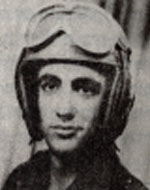Avidan, Meir
Meir, son of Arlette and Chaim, was born on January 4, 1948, in Tunis, Tunisia, and immigrated to Israel with his family in 1957. He studied at the elementary school in Beit Shemesh where his family settled, He studied at the Beit Shemesh Comprehensive High School, where Meir was especially fond of mathematics and physics and had a strong intellect, analytical ability, and a developed sense of criticism. After basic training, he was sent to serve in a tank battalion in Sinai. He was proud of belonging to the armored corps, loved his profession and was familiar with the operation of the tank and the combat doctrine of the armored corps. Meir was a dedicated staff member, who acted modestly and did his work quietly and faithfully. His Yaffa hour was when he took part in the IDF parade that took place in Jerusalem on Israel’s twentieth Independence Day, while he was in regular army service.In the Six-Day War, his unit participated in the battles of the Armored Corps in Sinai. In mid-February 1969, Meir was discharged from the regular army and assigned to reserve duty in the Armored Corps, which was called for periods of reserve service. At the same time, he studied for the entrance exams for the engineering school and succeeded in them. In 1970 he married his girlfriend Annette and together they moved to Be’er Sheva, where he studied at the engineering school. After completing his studies in 1971, Meir and his wife moved to Haifa and began working there as an electronics engineer in the Defense Ministry. Their son Gal was born in Haifa. Annette and Meir did not find their place in Haifa and returned to Beit Shemesh, who loved her and chose to live there. Meir was hired by Israel Aircraft Industries (IAI) in Lod and began to establish his family’s economic situation. His greatest ambition was to buy an apartment and build a home for himself and his family. He was a devoted employee and a loyal partner to IAI’s team of employees, and was fond of his fellow workers for his dedication and industriousness. He worked long hours in the lab until he found the right solution to the problem he had encountered. The plant’s managers and team members testify that after his fall in battle, the team lacks one of its pillars. Meir managed to combine hard and strenuous work together, a Simcha family life and extensive public activity. At the end of a long and arduous day’s work he spent time with his wife and son in the hot nest they had established and devoted a great deal of time to his son. He was known as an honest man who pursued truth and justice and was not prepared to compromise and deviate from the right path in his eyes. He invested great energy in public activities among the residents of Beit Shemesh and worked mainly to improve services for the residents and to preserve the quality of life and the environment. Meir had a developed sense of beauty and aesthetics and worked to cultivate values of culture and art among the inhabitants of the town. He was loved by his family and accepted by people for his kindness, simplicity and radiant personality. He had great wisdom and experience, but he was honest and modest in all his ways. A month and a half before he fell in battle, he and his family got into their new apartment in a housing project for young couples. Meir realized the dream of his life and became the owner of a house of his own, but his pleasure was short, for his fall in battle interrupted the course of his life while he was in the bud. During the Yom Kippur War, his unit participated in the battles against the Syrians in the Golan Heights. In a bitter battle that took place on the 7th of Tishrei 5734 (7.10.1973) Meir was injured and killed. He was brought to eternal rest in the cemetery in Kiryat Shaul. He left behind a wife and son, parents and two sisters. After his fall, he was promoted to sergeant. In a letter of condolence to the bereaved family, the commander of the individual wrote5: “The late Sergeant Meir served as a tank driver in a tank battalion. His friends in the unit published a pamphlet in memory of their fallen comrades in the battle, and his parents set up a memorial plaque for him in a synagogue in Ramle, and the Beit Shemesh local council commemorated a memorial plaque in the local synagogue. His name was immortalized in a memorial to his memory and the memory of his two tank friends who fell with him in battles in Nahal Yehudiya in the Golan Heights.
